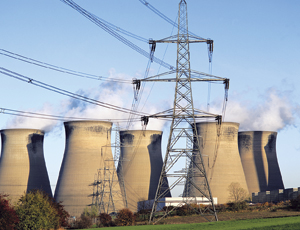A huge infusion of money for the Energy Dept. is being proposed to help modernize the U.S. electricity grid and develop electric vehicles and other cutting-edge energy technologies. Power contractors are enthusiastic about the effects on the industry and states are getting in line for their share.
The House bill would pump billions of dollars into DOE programs, including $11 billion to develop a “smart grid.” It also would provide $8 billion for loans for renewable energy and transmission lines linking wind farms in the rural heartland to urban areas.

In addition to the smart-grid initiatives, the House plan would provide DOE with $2 billion to research and develop projects designed to reduce U.S. reliance on oil, curb carbon emissions and cut utility bills. Projects demonstrating technologies for capturing and sequestering carbon-dioxide emissions from coal-fired powerplants would receive $2.4 billion. Another $2 billion would be used for loan guarantees and grants to promote advanced batteries for electric vehicles. The measure would also help build a market for renewable energy and alternative vehicles by providing state and local governments with $400 million to buy such vehicles.

45.8 Billion
For smart grid, renewable-energy loans, r&d, promoting electric vehicles and production tax credits
The stimulus package is likely to have immediate and long-term impacts on the power construction market, says Michael E. Beehler, associate vice president of Burns & McDonnell Engineering Co. Inc., Kansas City. It will boost projects that have been stalled for lack of financing and will create certainty for renewable projects for the coming decade, he says. Several multibillion-dollar transmission projects are in the pipeline, including ones in California, Texas and Colorado, says Beehler. Funding from the federal government could help move those projects along.
California Gov. Arnold Schwarzenegger (R) has requested $11.8 billion in the stimulus package from the Obama administration for energy efficiency and energy projects, including transmission lines, that he says are ready to go in California. Bonds that normally would have financed those projects are not available, Schwarzenegger says.
The 275-MW, $1.8-billion FutureGen zero-emissions coal-fired powerplant with carbon sequestration proposed for Mattoon, Ill., is ready to start construction this year if included in the final stimulus package. DOE withdrew from the project last year, citing cost overruns.
Other shovel-ready power projects include conventional and renewable projects that have been postponed this year because of financial uncertainties, says Richard Rudden, senior vice president of Overland Park, Kan.-based Black & Veatch Corp. Without that infusion of cash, Rudden says investor-owned utilities have or will cut capital expenditures by up to 15% this year because of the tightening economy.
| PROJECT NAME | STATE | PROJECT TYPE | COST ($ MIL.) |
|---|---|---|---|
| Central Utility Plant (improvements) | Mo.. | Powerplant (Other) | 16 |
| Wind Turbine w/Manufacturer | Wis. | Powerplant (Other) | 15 |
| Wind Turbine | Mass. | Powerplant (Other) | 5 |
| Fiber-Optic System Expansion | N.M. | Power lines | 1 |
| RFQ/AE: Landfill Gas (LFG) Utilization Project | Neb. | Powerplant (Other) | .6 |
| SOURCE: MCGRAW-HILL CONSTRUCTION DODGE, *PROJECTS CONSIDERED ELIGIBLE FOR STIMULUS FUNDING | |||
The House bill’s $275-billion tax-cut package will include at least $20 billion for renewable energy production tax credits. The PTC would be extended three years beyond 2009 for wind, but three years beyond 2010 for other technologies such as geothermal, which received a two-year extension last fall.


Post a comment to this article
Report Abusive Comment